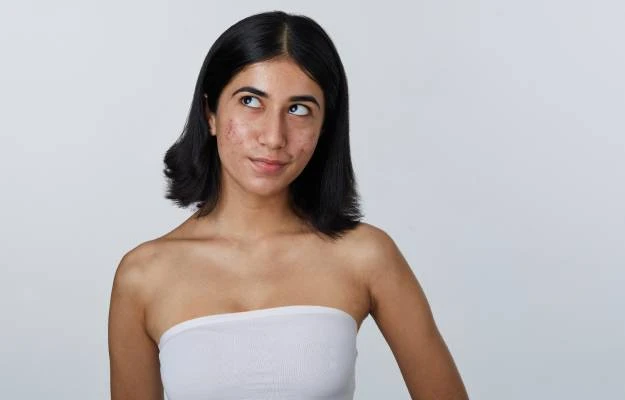Acne. Pimples. Zits. No matter what you call them, breakouts are frustrating. And when you’ve got a big meeting, a date, or just a day where you want to feel your best, makeup feels like a lifesaver. But here’s the tricky part: covering acne with makeup can often make it worse.
That’s right. The very thing we use to hide pimples can actually end up clogging pores, irritating skin, and creating a vicious cycle of breakouts. But don’t worry, you don’t have to choose between clear skin and confidence. You just need the right products and a smart routine.
Let’s break down how to cover acne the right way without feeding the fire.
1. Start with Skincare That Works With Your Makeup
Before you even think about foundation, your skincare routine needs to be on point. If you’re serious about managing breakouts, using products for acne and pimples that actively fight bacteria and reduce inflammation is essential.
One ingredient that’s gaining popularity in India (and for good reason) is nicotinamide gel. So what’s the deal?
Nicotinamide Gel Uses
Nicotinamide (also known as niacinamide) is a form of vitamin B3 that works wonders for acne-prone skin. It reduces redness, regulates oil production, soothes irritated skin, and strengthens your skin barrier, all without drying you out like some harsh acne treatments.
And here’s where Acnestar Gel comes in. It contains powerful antibacterial ingredients and has anti-inflammatory properties, making it ideal for those with mild to moderate acne. The gel form absorbs easily and won’t leave your skin greasy, perfect for layering under makeup.
Pro tip: Use a thin layer of Acnestar gel after cleansing and before moisturising. Let it absorb fully before applying makeup.
2. Choose Non-Comedogenic Makeup (Always)
If there’s one makeup rule acne-prone skin should live by, it’s this: non-comedogenic is non-negotiable.
What does that mean? Non-comedogenic products are specially designed not to clog your pores. If your foundation or concealer doesn’t say this on the label, chances are, it’s working against your skin.
Also, stay away from heavy, cakey formulas. Lightweight, breathable coverage is your friend. Look for foundations with ingredients like salicylic acid or tea tree oil that fight acne while you wear them.
3. Less is More: How to Apply Without Suffocating Your Skin
When you’re dealing with a breakout, the temptation is to pile on product. Resist that urge.
Instead, follow this less-is-more routine:
- Primer: Use a water-based primer that smooths the skin but doesn’t clog your pores. It creates a barrier between your skin and your makeup, which helps reduce irritation.
- Spot Conceal: Dab a full-coverage concealer only on the spots you need to cover. Use a small brush or clean fingers to blend gently.
- Light Foundation: Apply a thin layer of foundation over your entire face. Blend well with a damp makeup sponge to avoid buildup.
- Set Lightly: If needed, use a translucent powder to set only the oily zones or spot-concealed areas.
Always remove makeup at the end of the day, no matter how tired you are. Sleeping with makeup on is a fast-track ticket to clogged pores and new breakouts.
4. Use Anti-Inflammatory Gels as a Pre-Makeup Shield
When acne is inflamed, red, painful, and swollen, you need to calm it down before layering makeup. That’s where anti-inflammatory gel comes in.
In India, where the climate and pollution can easily irritate sensitive skin, using an anti-inflammatory gel before makeup can be a game-changer. Acnestar not only tackles bacteria but also soothes redness and swelling, giving your skin a smoother base for makeup.
It’s a small step with a big impact.
5. Sanitize, Clean, Repeat
Even the best acne-fighting products won’t help if you’re applying makeup with dirty tools. Bacteria from your brushes and sponges can undo all your hard work.
Here’s what you need to do:
- Wash brushes weekly (more often if you have active acne).
- Use alcohol wipes to sanitize makeup tools in between washes.
- Avoid dipping fingers into products. Use clean tools or pump dispensers when possible.
6. Post-Makeup: Heal While You Sleep
Once your makeup comes off, your skin begins its recovery phase. Nighttime is the perfect opportunity to use products to remove pimples and support healing.
Your post-makeup routine should look something like this:
- Gentle cleanser (micellar water or acne-safe face wash)
- Toner (alcohol-free and calming)
- Acnestar gel on breakouts
- Light moisturizer to seal in hydration
This routine clears away any makeup residue and helps keep your skin calm and clear.
7. The Best Top 3 Acne Products You Should Be Using
Let’s keep it real—there’s a sea of acne products out there. Some work. Some don’t. So, here are our top 3 acne must-haves that won’t let you down:
1. Acnestar Gel
A clinically trusted solution for acne. It fights bacteria, soothes inflammation, and fits seamlessly under makeup. If you want one product that ticks all the boxes, this is it.
2. Gentle Foaming Cleanser
Look for a cleanser with salicylic acid or tea tree oil. It should clean deeply without stripping your skin. Over-washing can irritate acne-prone skin, so twice a day is plenty.
3. Non-Comedogenic Moisturizer
Hydration is key—even for oily or acne-prone skin. A good moisturizer keeps your barrier strong, preventing future breakouts and helping treatments work better.

Final Thoughts: You Deserve to Feel Good in Your Skin
Makeup should make you feel more confident, not more anxious about your skin. With the right prep, the right products, and a little patience, you can cover breakouts without making them worse.
So next time a breakout hits before a big day, take a deep breath. Reach for Acnestar. Prime smart. Apply with care. And walk out the door knowing you’re taking care of your skin and your confidence.













